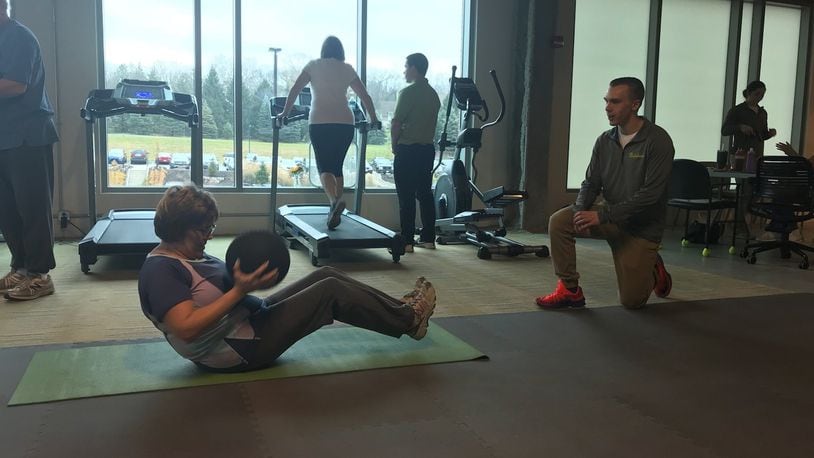“This keeps your heart rate elevated and is believed to utilize more fat stores as fuel for the exercise,” she said. “It’s effective because you can get a good workout in over a shorter duration of time.”
HIIT is a hit among fitness professionals, as the American College of Sports Medicine surveyed 4,000 such professionals and determined that high-intensity interval training will be the most popular fitness trend in 2018.
“High-intensity interval training has been a consistently high-ranking trend on the forecast in recent years, appearing in the top three since 2014,” said Walter Thompson, ACSM president and the lead author of the survey. “HIIT offers participants a good workout that can be done without a lot of time or equipment.”
Survey respondents mentioned that some of their clients are reluctant to participate in HIIT due to perceived risks but, according to Wonders, those risks can be minimized.
“I believe that as long as modifications are made for certain high-risk populations – like those suffering from chronic disease or the elderly – it can be a safe and effective workout,” she said. “A physician should be consulted before beginning any workout program, and any contraindications to exercise must be avoided. It’s also important to allow for adequate rest between sessions to allow the body to recover.”
Many local fitness facilities and community recreation centers offer HIIT options. In addition to enhanced overall fitness, other benefits can include improved heart function, reduced risk of type II diabetes and weight loss.
Group training – which jumped up four spots from last year – wearable technology, body weight training and strength training rounded out the top five trends. But whether it’s HIIT or yoga, Wonders offers some advice for anyone who wants to implement a new fitness program.
“First, make sure it’s safe to begin an exercise program. Then, find someone to help you stay accountable to your new program,” she said. “Find time to schedule your exercise into your day and stick to it. Don’t give up if you miss a few workouts. Start small and build up – no one ever ran a marathon without first learning how to walk.”
Top 10 2018 fitness trends
1. High-Intensity Interval Training (HIIT): HIIT involves short bursts of activity followed by a short period of rest or recovery, these exercise programs are usually performed in less than 30 minutes.
2. Group Training: Group exercise instructors teach, lead and motivate individuals though intentionally designed group exercise classes. Group programs are designed to be motivational and effective for people at different fitness levels.
3. Wearable Technology: Includes fitness trackers, smart watches, heart rate monitors and GPS tracking devices.
4. Body Weight Training: Limited to just push-ups and pull-ups, this trend allows people to get "back to the basics" with fitness.
5. Strength Training: Incorporating strength training is an essential part of a complete exercise program for all physical activity levels and genders.
6. Educated and Experienced Fitness Professionals: Given the large number of organizations offering health and fitness certifications, it's important that consumers choose professionals certified through programs that are accredited by the National Commission for Certifying Agencies (NCCA), such as those offered by ACSM.
7. Yoga: Based on ancient tradition, yoga utilizes a series of specific bodily postures practiced for health and relaxation.
8. Personal Training: Education, training and proper credentialing for personal trainers have become increasingly important to the health and fitness facilities that employ them.
9. Fitness Programs for Older Adults. Many health and fitness professionals are taking the time to create age-appropriate fitness programs to keep older adults healthy and active.
10. Functional Fitness. This is a trend toward using strength training to improve balance and ease of daily living. Functional fitness and special fitness programs for older adults are closely related.
About the Author
